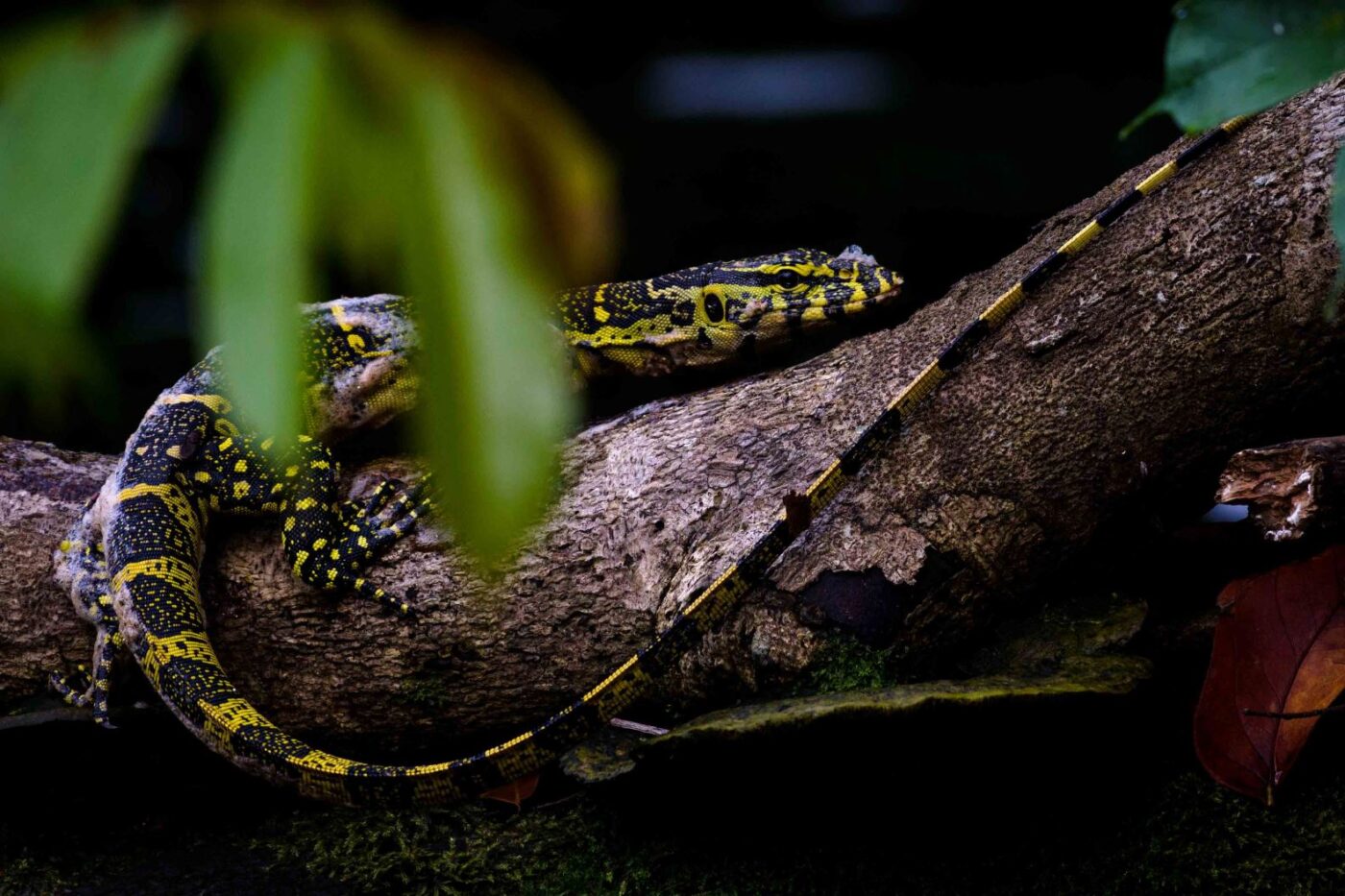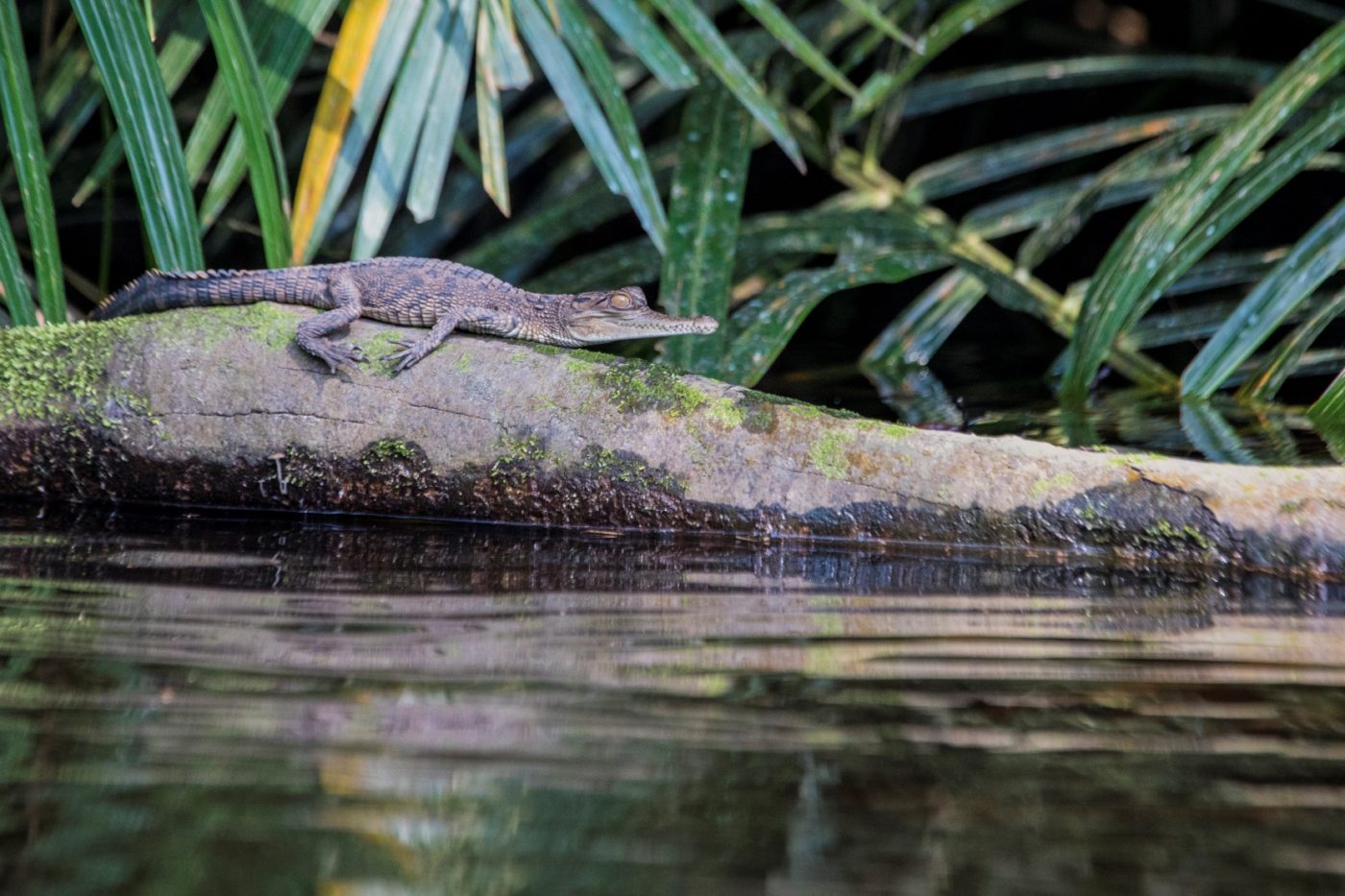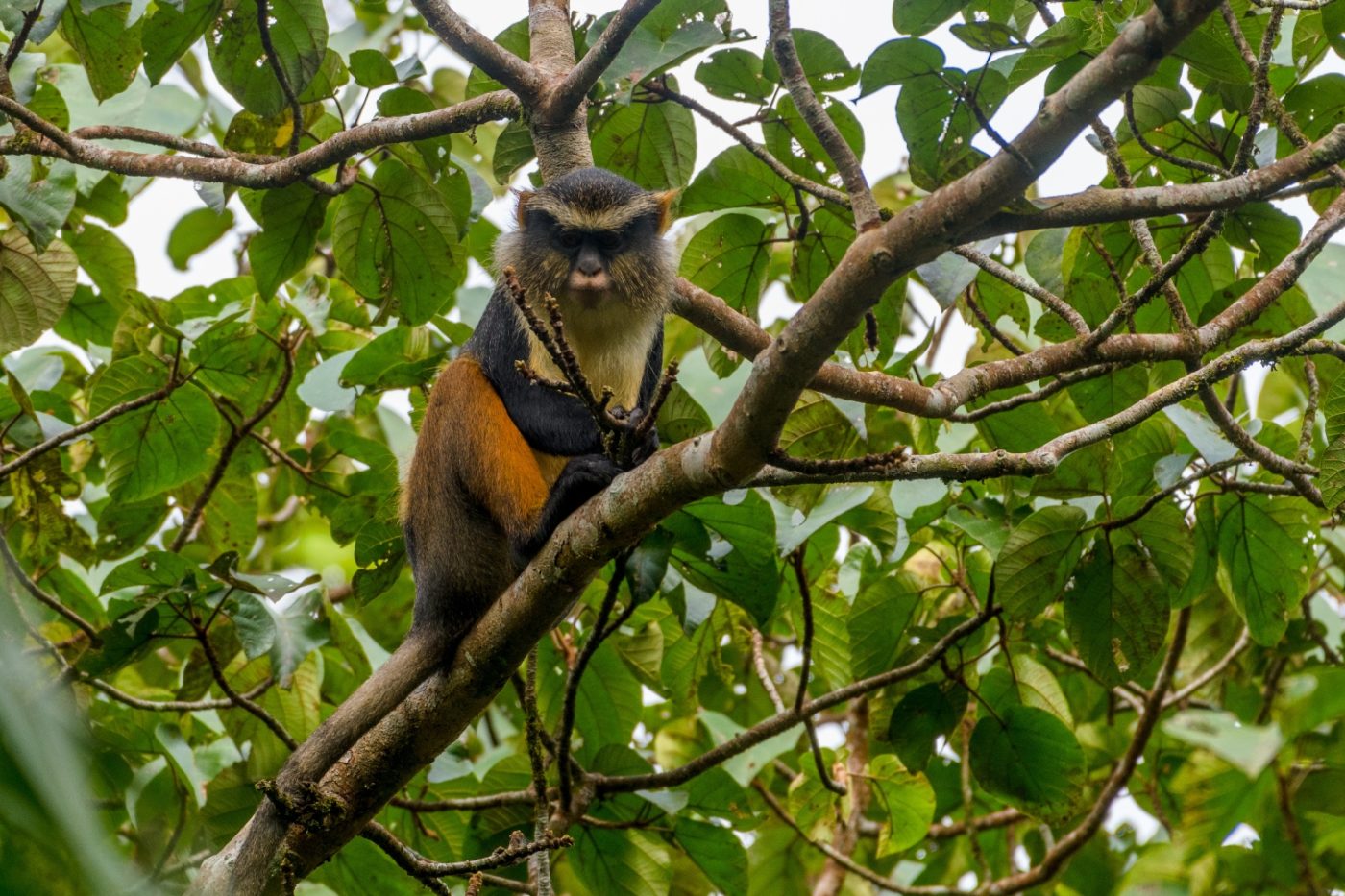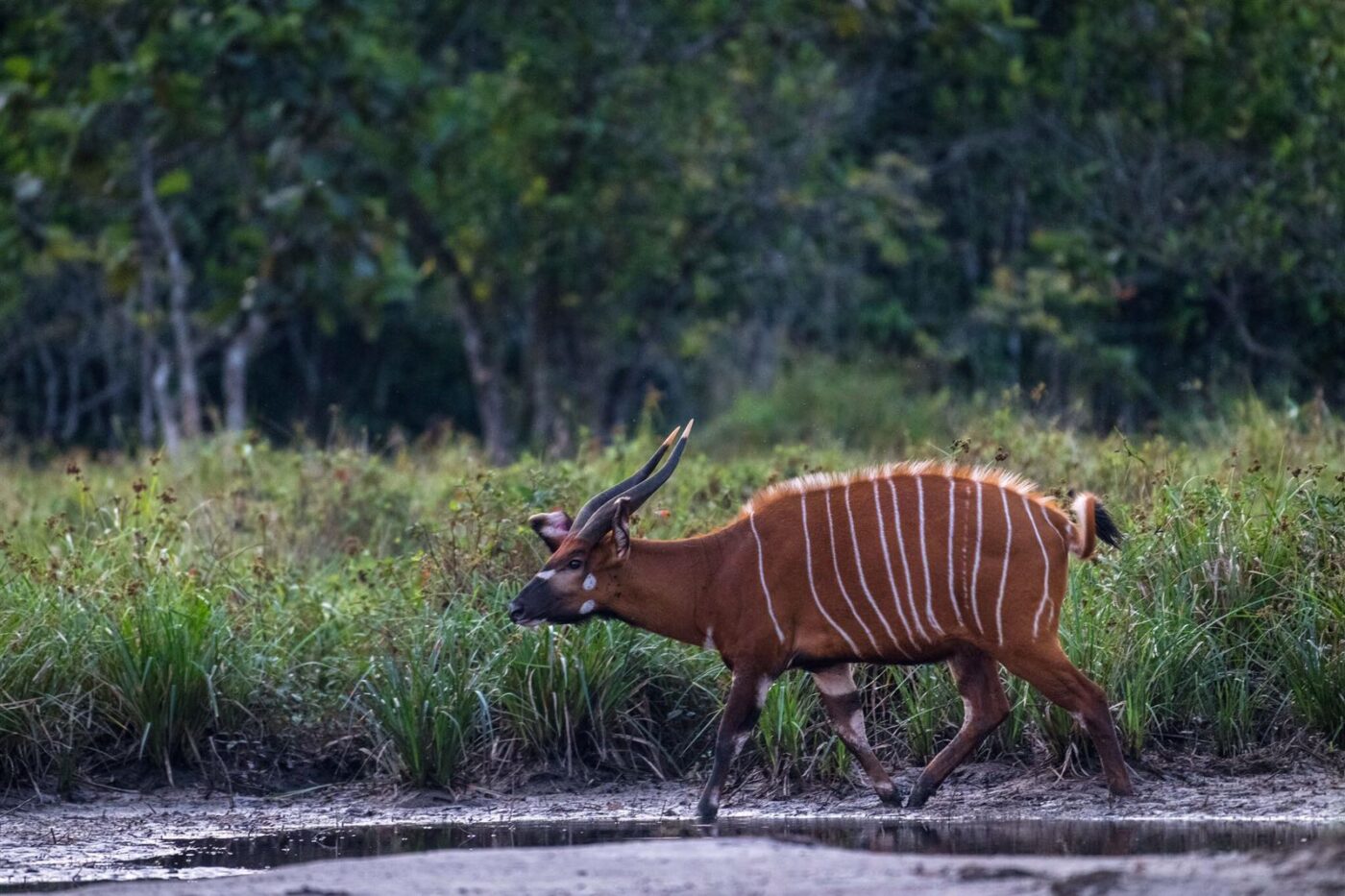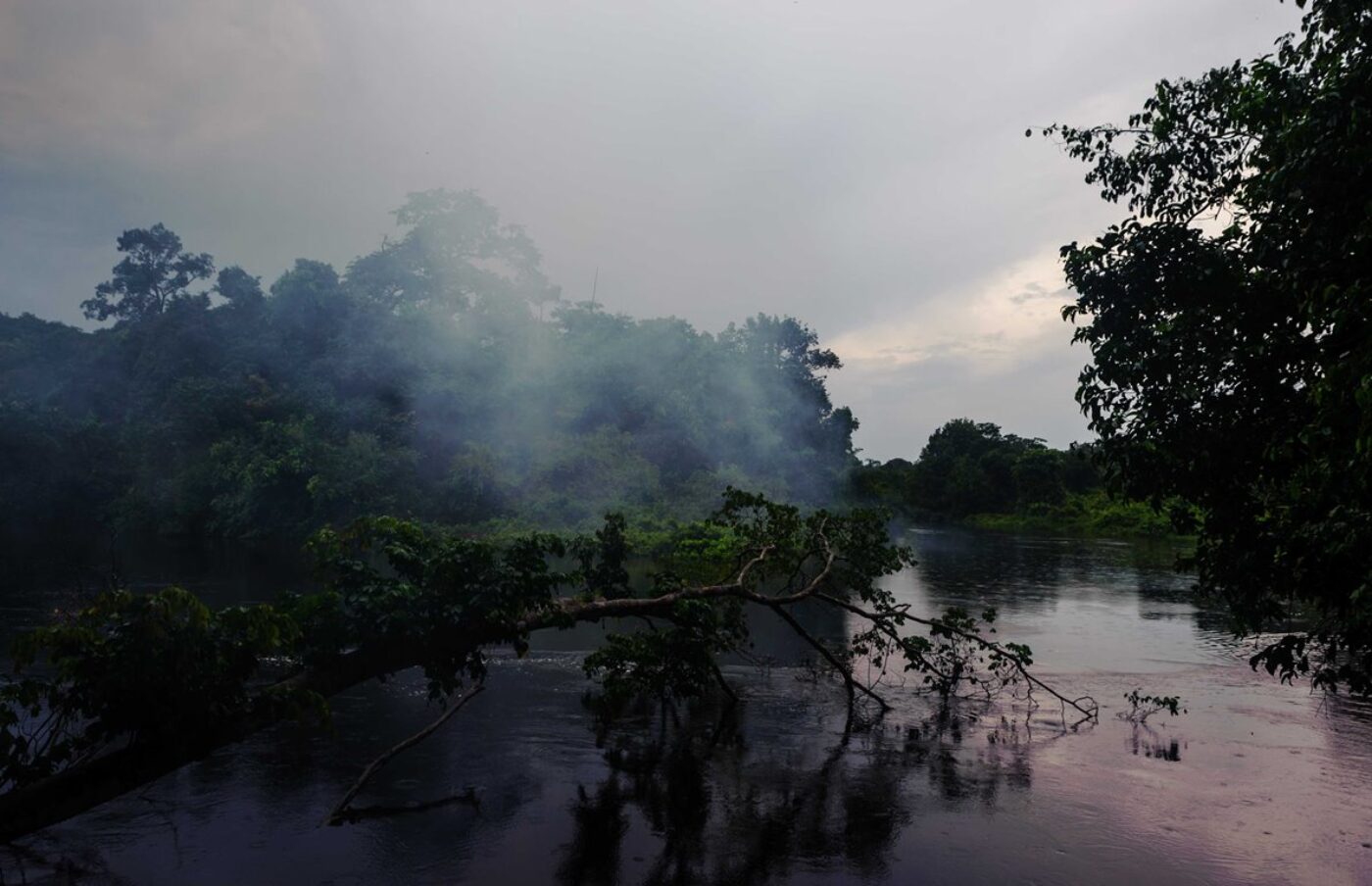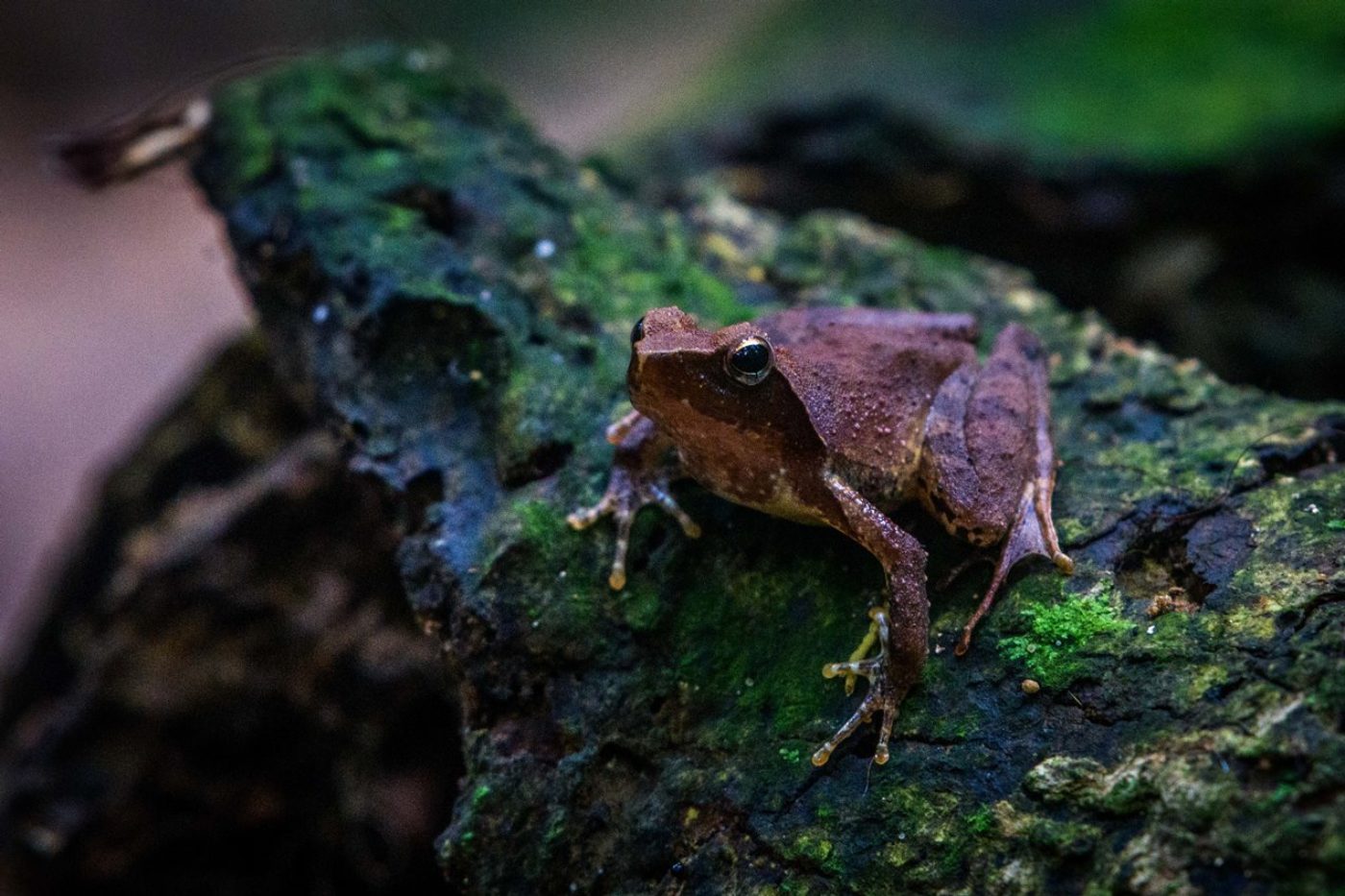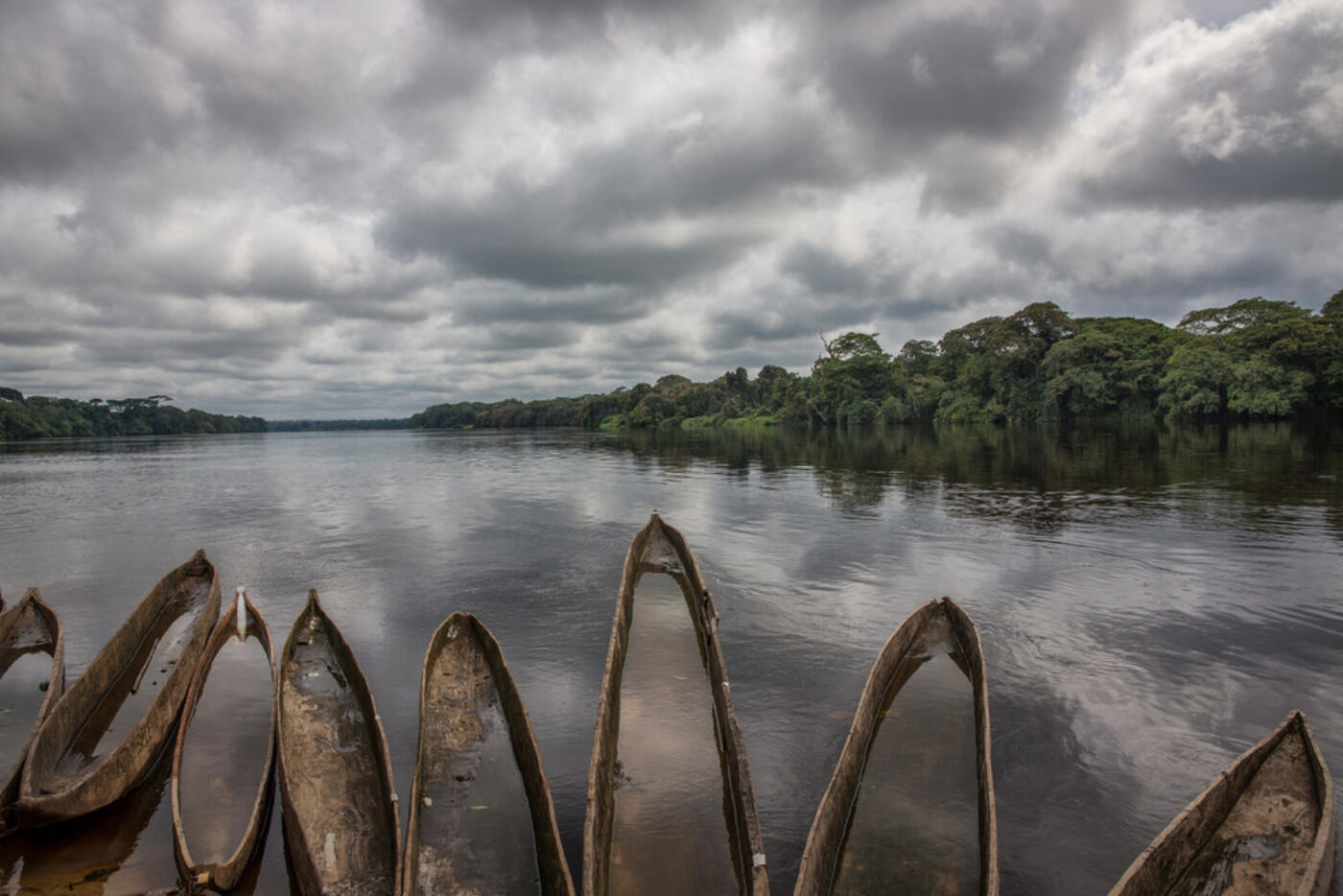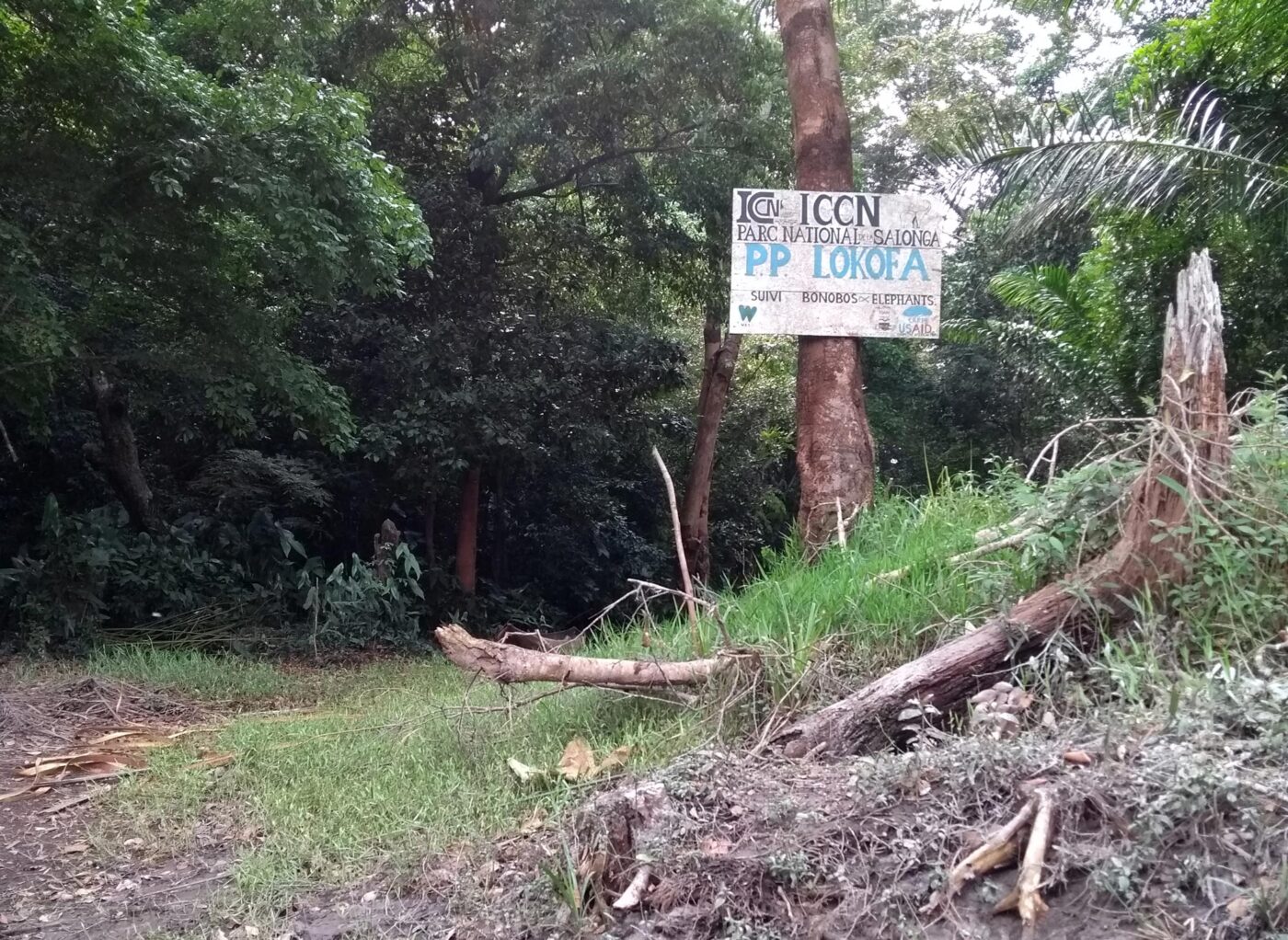Since 1984 the park has been listed as a UNESCO World Natural Heritage
Salonga National Park was awarded World Heritage Status because it “represents one of the very rare existing biotopes absolutely intact in central Africa. Moreover, it comprises vast marshland areas and practically inaccessible gallery forests, which have never been explored and may still be considered as practically virgin.”
Also UNESCO argued that “The plant and animal life in Salonga National Park constitute an example of biological evolution and the adaptation of life forms in a complex equatorial rainforest environment. The large size of the Park ensures the continued possibility for evolution of both species and biotic communities within the relatively undisturbed forest.”
Salonga National Park is the largest protected area of tropical forest in Africa
Salonga National Park is the largest protected area of tropical forest in Africa and the third largest forest national park in the world. To date, it remains one of the few areas in the world that is big enough for the evolution process to occur at a natural rate and remain relatively undisturbed by human activity.
Salonga is situated in the heart of the Congo Basin, south of the Congo River. It spans over 33,350 km². It consists of two large blocks (“north” and “south”) separated by a corridor of about 45 km wide . Its shape is reminiscent of human lungs. And really nature breathes here.
33.500 km²
Largest forest national park in Africa and larger than Belgium.
95%
Almost 95% of the landscape is covered by forest.
40%
The park potentially holds 40% of the world bonobo population.



